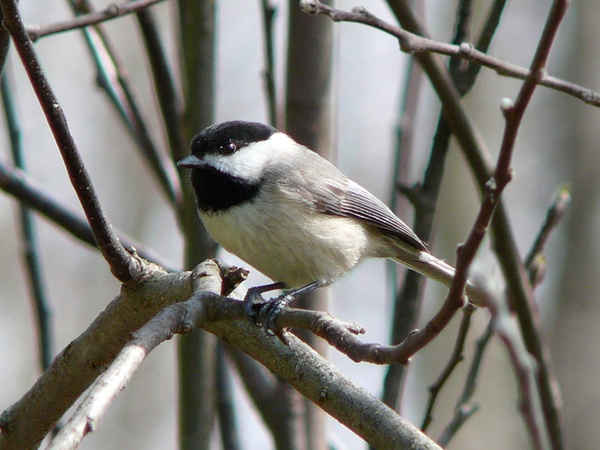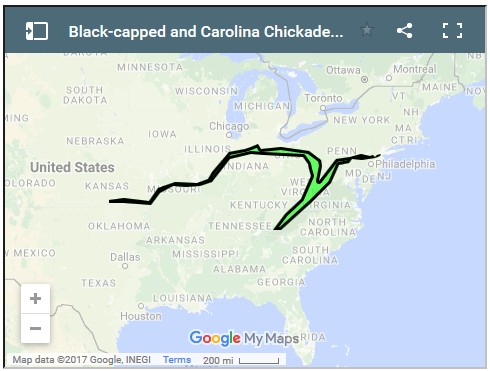
Last week I wrote about Pittsburgh’s Puzzling Chickadees and promised to tell you why we have fewer black-capped chickadees every year. The reason is: Our winters are getting warmer.
The Pittsburgh area is squarely in the contact zone where black-capped (Poecile atricapillus) and Carolina chickadees (Poecile carolinensis) meet and hybridize. Black-capped chickadees can survive cold winters so they live north of the zone. Carolinas cannot; they live in the south.
The contact zone snakes from New Jersey to Kansas, dipping south along the chilly Appalachian Mountains. Studies by Robert Curry and his team at Villanova University found that the contact zone is located where winter low temperatures average at or above 14 to 20oF.
In 2010 David Sibley drew the contact zone for his Distinguishing Black-capped and Carolina Chickadees article. Click on the screenshot to see his original map and zoom it for your area. The map is about 7 years old.

Seven years make a difference. During that time the zone moved north almost 5 miles. Here’s why:
Chickadees don’t migrate but young birds disperse to find a breeding territory. The easiest territory to claim is an “empty” place where there aren’t competing birds of the same species. For Carolina chickadees, that place is on the northern edge of the contact zone.
In 2000-2002 and 2010-2012, Robert Curry and his team measured winter temperatures and conducted DNA tests to identify chickadees in study plots north, south and inside eastern Pennsylvania’s contact zone.
The studies showed that over the 10-year period winter average low temperatures moved north 0.7 miles per year. They also found that female Carolina chickadees are dispersing further than their usual 0.6 miles. They’re moving 0.7 miles northward in lock-step with climate change.
What does this mean for you?
If you live on the northern edge of the contact zone your chickadees can change in a year or two from 100% black-capped chickadees to a mix including Carolinas and hybrids. On the southern edge it’s just as interesting as the black-cappeds disappear.
So don’t take Pittsburgh’s chickadees for granted. The contact zone is moving northward.
(photo from Wikimedia Commons, map screenshot from David Sibley’s blog: Distinguishing Black-capped and Carolina Chickadees. Click on each image to see the original.)